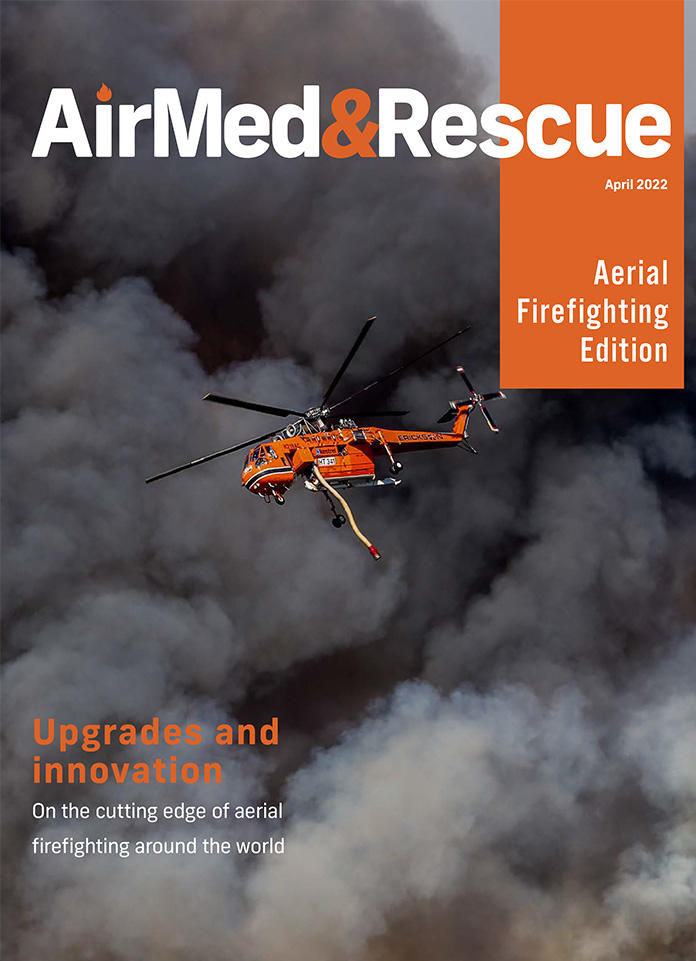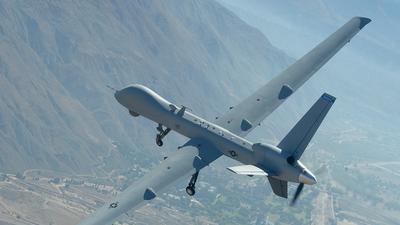Developing resilience in helicopter operations

‘Startle and surprise’ training is mandatory in the airline industry, but not so in helicopter operations. Alex Pollitt argues that until companies are forced to pay for this extra training by regulation, they will not shoulder the cost based on safety imperatives alone
Here’s something that’s no surprise: the requirement to train helicopter crews in the psychological and physiological effects of ‘startle and surprise’ was born of catastrophic incidents and accidents that occurred in the airline industry. Obviously, startle and surprise can happen to any of us, not just airline crews, but do the numerous differences between airline transport flight profiles and helicopter operations mean that we should be looking critically at how to approach the subject from a rotary wing perspective? Is it as significant a hazard in the low-level, high-workload, high-obstacle environment in which helicopter crews spend much of their time?
Startle and surprise was added into the crew resource management (CRM) syllabus a little over five years ago. Since then, and despite becoming a hot topic for human factors researchers (there have been some notable studies looking at practical ways to apply the human factors science on the flightdeck), there is an ongoing lack of credible practical techniques to apply to situations of startle. This is particularly so when manually flying a helicopter at 500ft, instead of managing abnormal conditions at 35,000ft with the flight director coupled.
Aircrew tend to be an intelligent, critically thinking, and questioning kind of audience, and trying to pull practical lessons from what is known about our hugely variable human reactions under stress is not easy for CRM trainers. Providing credible training in the classroom, if the main lesson is that a startling event can be distracting, and that surprising events can be managed by trying to reduce the element of surprise, is bound to be met by raised eyebrows. Startle and surprise is a complex subject to pin down because it doesn’t exist in a bubble, but is intrinsically tied in to other areas of both technical and non-technical skills. All this has meant that the training has been interpreted (fairly) by some crews to be quasi-scientific and constantly changing according to the latest research and the interpretation of different operators.

© Nick Martin
What, then, should startle and surprise training mean in an applied sense and how should we be approaching it? Apart from simply describing the psychological and physiological effects of surprise and startle, according to the European Union Air Safety Agency (EASA) CRM syllabus, training should cover:
- The development and maintenance of the capacity to manage crew resources
- The acquisition and maintenance of adequate automatic behavioral responses
- Recognizing the loss and re-building situation awareness and control.
Which sort of begs the question, ‘How are these requirements distinguishable from the normal objectives of CRM training?’
Startle and surprise are human reactions that result from the interplay and outcome of other competencies. There is a line of thought that they cannot be trained for at all. Startle is a physiological reaction that cannot be ‘trained for’ by definition. And while you can train other competencies to reduce the effects of surprise, you cannot train for surprise itself. This is where training for startle and surprise merges into the large and complex topic of Competency Based Training (CBT). There’s no doubt that focusing training on key competencies is the direction in which CRM and non-technical skills training is moving. How does this work in practice?
The principal piloting competencies have been identified as:
- Application of Procedures and Knowledge (APK)
- Leadership and Teamwork (LTW)
- Situational Awareness (SAW)
- Communication (COM)
- Problem Solving and Decision Making (PSDM)
- Workload Management (WLM)
- Flight path management (automatic) (FPA)
- Flight path management (manual) (FPM).
Consider the images above and below, which depict how we might deploy these competencies. The first image shows us in normal cruise flight. We are applying our procedures and knowledge of the aircraft and airspace around us (APK). We manage the flightpath, perhaps with some higher modes coupled (FPA), and we believe we have a good awareness of the situation around us (SAW). This is our comfort zone of normal performance. We are also using all the usual non-technical competencies, but in a relaxed, low effort, low workload kind of way, without much need to put them to further use.
Suddenly, we are unlucky enough to suffer a black swan event: an incident that is not expected, beyond the bounds of our previous experience, and so different to anything that we have seen before that we do not understand what is going on. We are startled by this and suffer the effects of surprise.

There is an inevitable dip in our performance as a result, and our ability to react drops. We find it hard to understand the new situation we find ourselves in (SAW). We can’t apply any established standard operating procedure, because there isn’t one. Our knowledge of other malfunctions doesn’t fit the situation either (APK). We might decide to take manual control of the aircraft (FPM).
What tools do we have that we can apply? Our non-technical competencies. They are what will allow us to recover the situation by leaning on teamwork, communication, shedding workload, and analyzing the situation by applying generic knowledge that we share. Once deployed, these competencies can help us adapt to the new situation and recover above the line of normal performance. Operational resilience following this kind of surprise event is made up of three elements: resistance, recovery, and adaptation.
Managing an event like this requires pilots to use their technical and non-technical competencies to best effect to maximize resilience and minimize the possibility and effect of surprise. In the technical sphere, this depends on things like having a sound technical knowledge of the aircraft to fall back on and having to hand well developed ‘action plans’/ procedural schemas that have been mentally rehearsed. In the non-technical sphere it is dependent upon factors such as effective aircraft monitoring, good situational awareness, threat and error management strategies and, fundamentally, a questioning attitude and expectation and suspicion of things about to go wrong. Anticipation is the best preparation for startle and surprise.
How do you train to improve performance in this kind of situation? The answer isn’t a narrow focus on ‘startle and surprise’, because the root causes of the problem are not the human reaction to the startle or surprise event. Building resilience hinges on our ability to anticipate events in flight by putting a greater emphasis on developing a breadth of competencies that give pilots the tools to deal with both anticipated and unanticipated events. This is supposedly what competency-based training is all about, and it depends on an ongoing evolution from a mentality that piloting skills are all about flying aircraft, to one that recognizes that they are in fact more about being effective managers of teams, relationships, threats, hazard environments, and complex automatic systems. Startle and surprise is a reaction that has its root causes elsewhere. Training for it is about identifying those root causes and then focusing our training accordingly.
Spatial disorientation is certainly a big thing for helicopter pilots, but has startle and surprise leading to aircraft upset been responsible for the same loss of life in helicopters that has led to its prioritization in the airlines?
Taking the training into the air
For airline transport crews, the largely classroom-based startle and surprise training is paired with the additional requirement of Upset Prevention and Recovery Training (UPRT), which has been required by regulation since 2019 and provides a practical, applied element of flying, which dovetails with the classroom theory. It has led to a burgeoning market of training providers offering comprehensive courses in intervention, resilience development, and recovery strategies from all kinds of aircraft upset. So, is there a place for UPRT in the rotary wing environment?
Perhaps. Spatial disorientation is certainly a big thing for helicopter pilots, but has startle and surprise leading to aircraft upset been responsible for the same loss of life in helicopters that has led to its prioritization in the airlines? A case might easily be made for giving priority of attention and investment to other more helicopter-centric safety issues, such as Inadvertent Entry Into Instrument Meteorological Conditions (IIMC), controlled flight into terrain, and the obstacle environment.
One answer could be a scenario-based ‘helicopter hazards’ simulator course that specifically trains the non-technical skills elements identified in key accident causes such as spatial disorientation, surprise and startle, IIMC, and obstacle environment hazards. Such a course would allow instructors to dedicate real time and thought to developing resilience to the key operational hazards faced by rotary wing crews on a daily basis. However, the fact is that a rotary wing version of UPRT is not currently mandated for helicopter pilots and so remains unavailable. Until companies are forced to pay out for this kind of extra training by regulation, they will not shoulder the cost based on a safety imperative alone.

April 2022
Issue
This edition of AirMed&Rescue contains in-depth analysis of firefighting aircraft and equipment innovation, the pros and cons of amphibious and land-based air tankers, using drones as fire surveillance machines, and the issue of federal versus state coordination of aerial firefighting assets in the US.
Alex Pollitt
Alex Pollitt, Pilot and CRM Trainer. A helicopter pilot with Bristow Group, currently flying for the Dutch Caribbean Coastguard operation, he has a particular interest in non-technical competencies, Crew Resource Management and Human Factors in Aviation. Alex is a qualified EASA CRM Trainer and UK Military Aviation Authority accredited Human Factors Facilitator with land-based and maritime flying experience, including military and civil search and rescue operations. He holds an MA in International Liaison and Communication and is currently studying for an MSc in Human Factors in Aviation with the University of Coventry.




